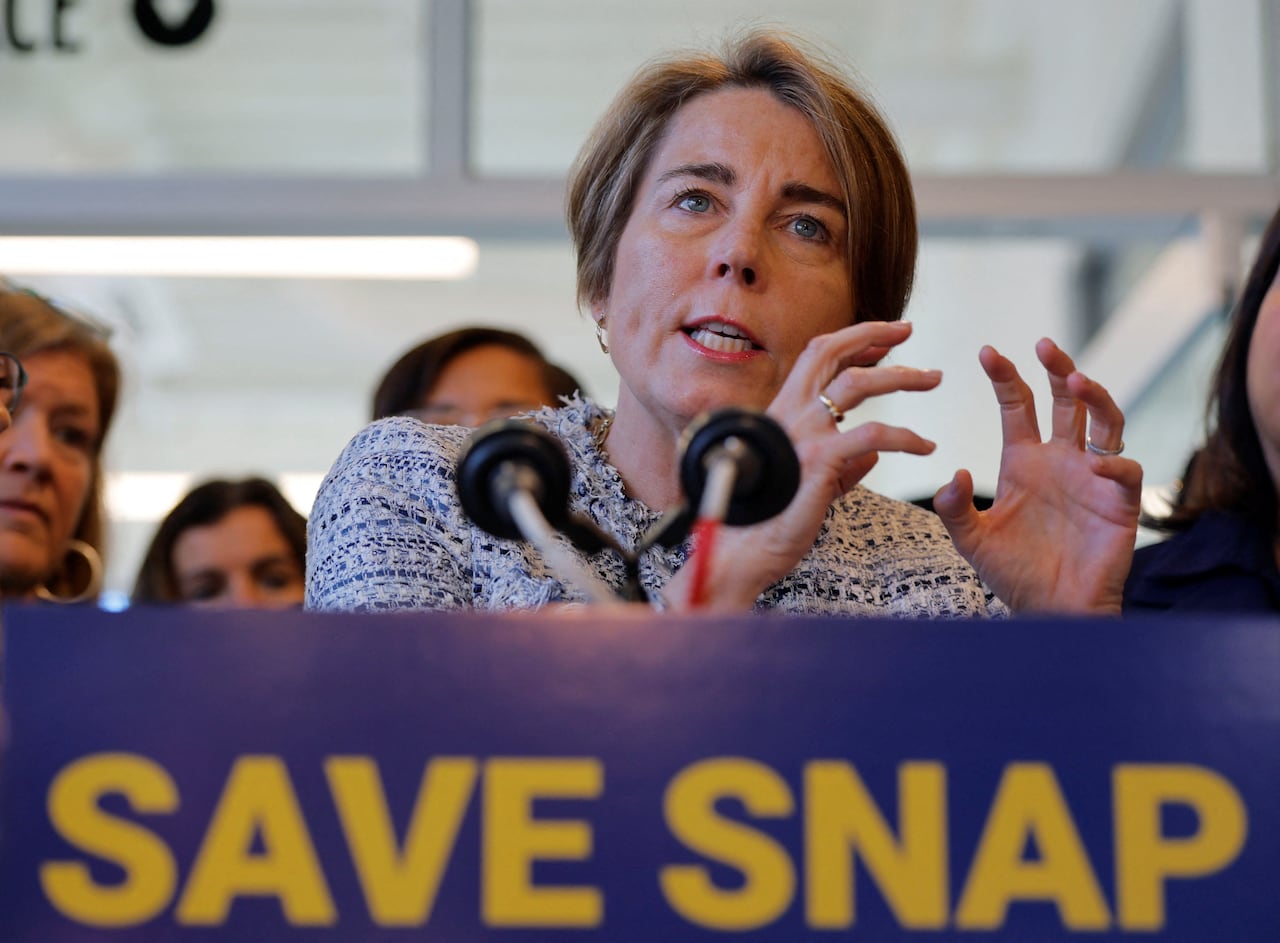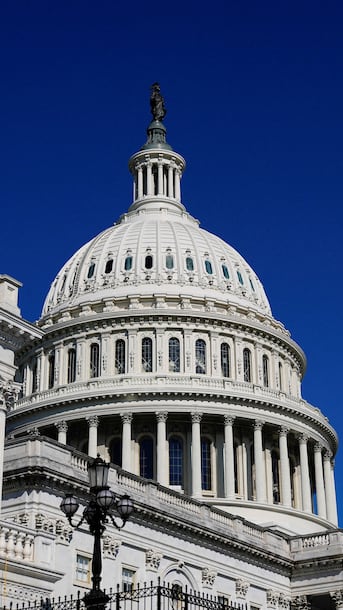U.S. states are warning food aid recipients their benefits may not be distributed beginning Saturday if the federal government shutdown stretches into its fourth week.
Warnings issued on at least two dozen state websites flag the potential for an unprecedented benefit gap in November for Americans who get aid from the Supplemental Nutrition Assistance Program (SNAP), also known as food stamps, and the nearly seven million who receive aid from the Special Supplemental Nutrition Program for Women, Infants and Children (WIC).
The shutdown, which began Oct. 1, is now the second-longest on record.
Lower-income families who qualify for SNAP receive debit cards loaded each month by the federal government that work only for groceries at participating stores and farmers’ markets. It provided an average of $187 a month to 41.7 million people, affecting about one in eight Americans.
In the accounting year that ended on Sept. 30, 2024, SNAP cost just over $100 billion, including the half of state administrative costs covered by federal taxpayers.
States limited in trying to fill the breach
Democratic senators, House representatives and mayors wrote Agriculture Secretary Brooke Rollins to fund November benefits using a SNAP contingency fund estimated by the Center on Budget and Policy Priorities to contain about $5 billion. That amounts to 60 per cent of the cost of one month of the benefits.
But on Friday, the USDA said it would not tap into the funds and instead would reserve them for responding to natural disasters and other emergencies.
“Bottom line, the well has run dry,” a notice from the department said. “At this time, there will be no benefits issued November 01. We are approaching an inflection point for Senate Democrats.”

The unusually politicized message from a government agency reflects the fact that Democrats have withheld votes on a spending bill. Democrats say they will not agree to reopen the government until Republicans negotiate with them on extending subsidies under the Affordable Care Act that will expire for millions of Americans at the end of the year.
Republicans say Democrats must first agree to reopen the government before negotiation.
Democratic Sen. Chris Murphy of Connecticut accused Republicans and President Donald Trump of not agreeing to negotiate.
“The reality is, if they sat down to try to negotiate, we could probably come up with something pretty quickly,” Murphy said Sunday on CNN. “We could open up the government on Tuesday or Wednesday, and there wouldn’t be any crisis in the food stamp program.”
In the absence of federal action, some states have stepped in.
California and New York said they would send money to food banks. Virginia on Thursday declared a state of emergency to fund November benefits.
But others have found little option for aiding SNAP recipients. Alaska’s Department of Health website said the agency explored using state money for benefits but found it impossible.
“Reprogramming the federal system to instead draw funds from the state treasury is not feasible due to vendor and system timeline constraints,” according to the website.
Other states are telling SNAP recipients to be ready for the benefits to stop. Arkansas and Oklahoma, for example, are advising recipients to identify food pantries and other groups that help with food.
But nine food banks and anti-hunger groups in eight states told Reuters they will struggle to absorb higher demand if November SNAP benefits are not distributed.
“The reality is, there’s not a ton we can do on our own. For every meal we provide, SNAP provides nine. We can’t make up the difference, and philanthropy can’t replace government support,” said Claire Neal, CEO of the MANNA FoodBank in Mills River, N.C.
‘We’re in some real trouble’: food bank CEO
Food banks have already seen record demand in recent years as food price inflation and the long tail of the COVID-19 pandemic strain household budgets.
More than 50 million people received food from food banks, pantries and other charitable sources in 2023, compared to roughly 40 million in 2019, according to Feeding America, a national food bank network.
The U.S. government can literally shut down — but Canada’s can’t. Here’s why the systems work so differently.
The Facing Hunger Foodbank, which serves households in West Virginia, Kentucky and Ohio, has had to explain to customers this year why the organization is sometimes rationing bags of potatoes. The food bank has had to shrink its allotments as higher food costs and surging need strain its budget.
“You remove SNAP dollars, and people have no resources. We’re in some real trouble,” said Cynthia Kirkhart, the food bank’s CEO.
The government shutdown isn’t the only development that could cut access to SNAP. The broad policy and tax law that Congress passed and Trump signed in July also calls for changes to the program. Adults with children from 14 to 17 will no longer be exempt from a work requirement to receive benefits, and neither will people ages 55 through 64.
Those policies are in effect now, and some people could begin losing coverage around the start of January.
Another change in the law will come in future years. Starting in October 2026, states are to pick up three-fourths of the administrative costs, as opposed to half now. While it’s possible Congress could modify some of those policies, resuming government operations alone won’t change them.
www.cbc.ca (Article Sourced Website)
#SNAP #benefits #Nov #important #date #U.S #government #shutdown #CBC #News

